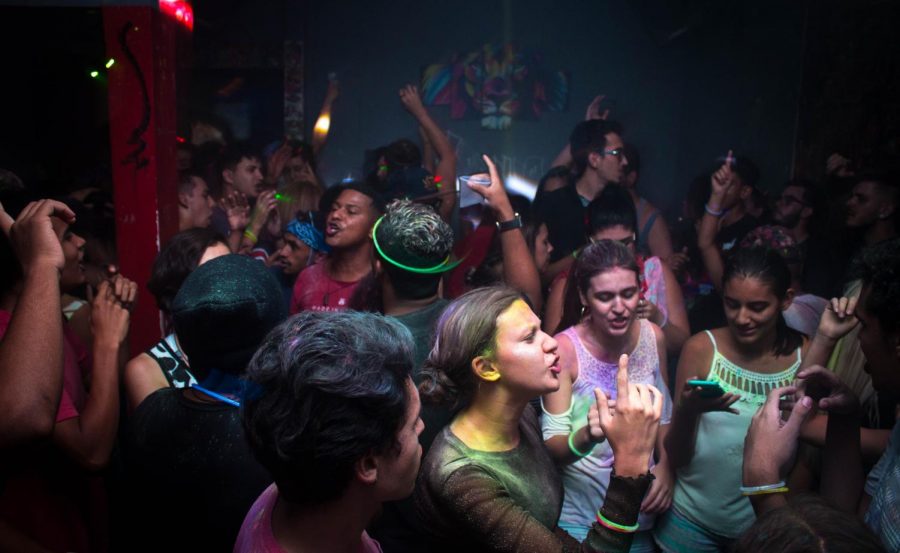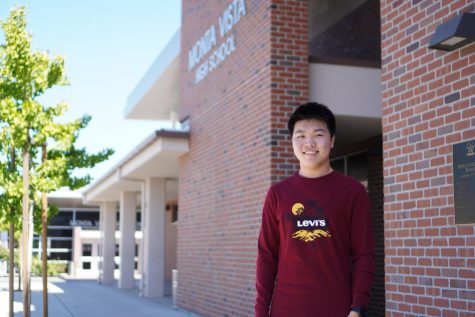We know how to party
The varying party culture at South Bay Area high schools
November 21, 2018
When Fremont HS junior Ashley Henry entered a small home in East San Jose, she found herself in a room packed with students, dozens of them intoxicated and slumped over couches. With the smell of weed and alcohol in the air, a voice pierced her ears and she turned to find the party host cussing and shrieking at the students around her. Deciding she had seen enough, Henry and her friends snuck out of the party and headed home.
A few miles away, MVHS freshman Lauren Ruckstuhl had just returned home after exploring her neighborhood with several friends. Ruckstuhl arranged a triangular formation of solo cups filled with Fanta. For the remainder of her informal party, she played cup pong with her friends, but unlike the party Henry had attended, there was not a single whiff of alcohol in the house, and not an ounce of weed.
Whether schools are located within a few miles or several cities apart, party culture takes on vastly different meanings across various groups of students. Some schools, such as Los Gatos HS, feature frequent, wild parties as opposed to schools like MVHS which have only a few a year, according to an anonymous LGHS senior, who will be referred to as Kenton in order to protect his identity. Regardless of the school, party culture is undoubtedly a factor that shapes the student body.
PLANNING THE PARTY
Kenton shares that each weekend, two to three parties are hosted by LGHS students. These parties can range from small get-togethers or kickbacks to full-on parties with around 400 students. Kenton estimates that more than half the student body of LGHS has attended at least one major party throughout high school. He acknowledges that LGHS tends to have a more prevalent party culture than many other schools in the Bay Area and that this culture is partially related to the psychographics at his school.
“In our area, a lot of kids see their parents drinking, smoking [cigarettes] and stuff like that,” Kenton said. “Partying [has also run] deep in our school’s culture ever since it was founded, in 1908. People in our area are kind of notorious for having money, and since kids have money and free time, that just adds up to party time. [In] my knowledge [of] the past, [for] 30 years Los Gatos has been a party-heavy school.”
Less than 10 miles away, Archbishop Mitty HS sophomore Addison Cosgrove attends parties once or twice a month. Cosgrove believes the atmosphere of a party depends entirely on the group of people hosting it, and for her, AMHS parties definitely have room for improvement.
“I went to this one girl’s going away party,” Cosgrove said. “She was like, ‘Oh, it’s going to be a rager.’ Her parents were there. A snow cone machine showed up. Are you kidding me?”
However, according to Cosgrove, the spirit and intensity of parties varies between grades. She recalls hearing about a simple freshman birthday party that escalated into something more.
“[The host’s] mom was there, and she was letting people drink and stuff, as freshmen,” Cosgrove said. “And then someone had sex on the couch and like I was like ‘Are you f—ing kidding me’? I was like ‘this is [a] birthday party!’ The mom was there!”
SAFETY AT PARTIES
Ruckstuhl believes that MVHS parties are, in a word, safe. Parties are usually only hosted around holidays or events such as Homecoming, and Ruckstuhl says she does not consume any drugs or alcohol.
But at schools with more vibrant party cultures, students are accustomed to bringing alcohol to parties. Kenton often reminds classmates to bring marijuana and liquor, emphasizing that they should “bring enough to share with others.” Although Kenton’s classmates are willing to bring these substances, his parents do not approve. However, they prefer to be present at parties to keep track of what’s going on and provide help in case someone gets seriously intoxicated.
“My parents weren’t encouraging,” Kenton said. “Everyone knows that there’s going to be a party, there’s going to be hard liquor, there’s going to be weed and stuff like that. But I made a lot of promises to my parents regarding the amount of alcohol that was going to be present.”
The presence of drugs and alcohol can have impacts beyond temporary enjoyment at parties. In 2002, LGHS student Eric Quesada met a tragic death after a drunk driving accident. In order to provide a safe means for students to get home without driving intoxicated, a program was put in place, and according to Kenton, there hasn’t been a fatality due to driving under the influence since. The program, SafeRides, a non-profit organization funded by Community Against Substance Abuse (CASA), provides rides for students after parties in a completely confidential manner.
Kenton shares that some students dislike the party culture at LGHS, believing it a risk to student safety. Despite the occasional backlash that Kenton hears, he continues to engage in the school’s party culture. For him, parties are an easy way for a large group of students to socially bond outside school.
“At [LGHS], I’ve just seen that parties bring people together and don’t really have a negative effect on other people,” Kenton said. “Come to a party, stay completely sober, and you’ll see how much fun it is.”
Although Kenton and his classmates from LGHS consider partying the norm, Kenton does point out the dangers of party culture at his school. According to Kenton, high schoolers should not be smoking and drinking at their age, as overconsumption could affect brain development as well as lead to other addictions.
Beyond the health impacts of party activities, Cosgrove believes it is logistically dangerous to engage in reckless behavior at parties. Cosgrove is especially sensitive because she attends a private school, which may lead to greater potential punishments if students are caught misbehaving.
“If somebody takes a video of something you do at a party, and they send it in, you’re screwed,” Cosgrove said. “Like, oh my God. You have to be so careful. Most people aren’t because they trust their friends, but I don’t really trust anybody because everybody’s so fake.”
PARTY PRECAUTIONS
In addition, Cosgrove has witnessed several parties get shut down by the police. She explains that she often receives invitations to parties from her friends only to have the same friend message her a few hours later telling her the party was shut down. Kenton also notes that word of mouth spreads quickly when cops are nearby. According to him, police are informed by neighbors that find the party a noise disturbance. Cosgrove is sympathetic to those who notify police of noisy parties.
“They throw [parties] in neighborhoods and their parties go until 11, people want to sleep,” Cosgrove said. “They play music so loud and people do stupid things. Like, they may get drunk and do stupid stuff in the street. People don’t want to see that.”
Kenton believes that regardless of how students engage in partying, party culture will continue to thrive across high schools.
“The party culture kind of draws you in,” Kenton said. “One of your friends starts doing it, then another friend, then all your friends are kind of drawn in, then you’re the only one out. At the end of the day, it’s not really peer pressure that gets you to do it, it’s just that your own curiosity just draws you in to see what actually goes on at these parties, that makes your friends excited.”



















